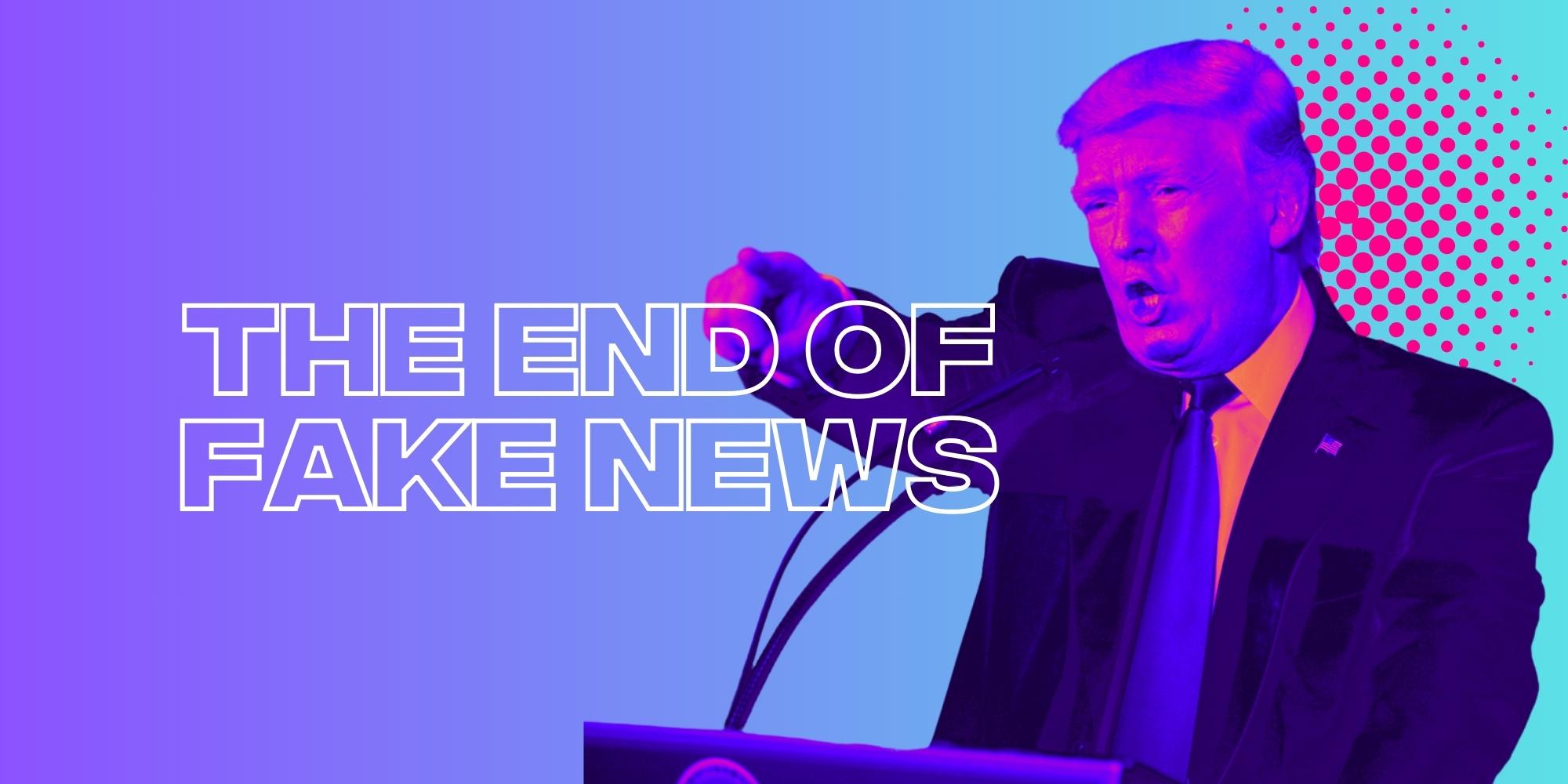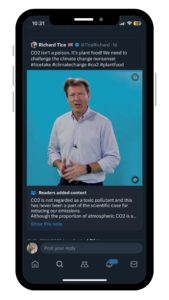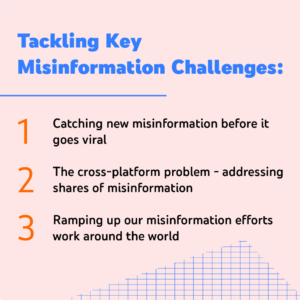Is The End Of Fake News On The Horizon?
Nov 27, 2023
Social Media Platforms

Digital platforms like Facebook, X, and Google have become key players in shaping how people communicate and gather information. However, with the responsibility of providing such important connections and news, comes the even greater task of warding off those who wish to tarnish that with half truths and white lies.
Although the Oxford dictionary only added the term ‘fake news’ to its roster in 2019, following Donald Trump’s dedicated use (or overuse) of it, online users have been consuming fake news on social media since long before. A Reuters Institute survey found that 30% of respondents now use social media as their main way of accessing news and information, making it all the more crucial that what they’re being fed is truthful.
The spread of fake news on social media, whether purposefully or unintentionally, violates the right to accurate information and endangers citizens on issues of public interest, such as climate change and current affairs.
But who’s responsible for stopping the spread?
Digital and social media platforms undoubtedly have a responsibility to monitor and mitigate the fake news being spread on their own turf if they wish to retain users. However, the onus isn’t entirely on them when it comes to protecting the wider internet. Social media users also have an equal responsibility to prevent the spread of fake news through thinking more critically about the news they come across online. The government has the power to aid this by promoting news literacy and teaching people the process of content checking.
But consumers are where the government aid tends to stop. Individual platforms have an obligation to continually update and tailor their guidelines and systems to prevent fake news on social media from being spread under their watch.
But how can they do this?
COULD AI BE THE SOLUTION FOR PREVENTION?
People are inundated with information every single day. Each minute 350,000 tweets are shared, as well as 34 million videos uploaded to TikTok and 4.75 billion items posted to Facebook per day.
The monitoring of this much daily information is, of course, impossible for a human. So why not let AI give it a shot?
AI fact-checking tools, such as TinEye, Logically, and Google Fact Check Explorer/MarkUp Tool, can be leveraged by companies to address their obligation towards public safety online.
Meta has already taken a step towards this by launching its new AI-powered tool called Sphere to help detect and address fake news on social media. The tool helps researchers train receivers to handle a wide range of documents, preparing automatic systems for challenges such as misinformation, noise and incoherent text.
The launch of Sphere is an addition to the platform’s pre-existing fact-checking initiative launched in December 2016. Accessible to a range of countries around the world, the initiative sees Facebook work with certified independent third-party fact-checking organisations in each one in “identifying and addressing viral misinformation”.
However, Facebook’s access to the mountains of data it generates is what allows it to make AI-powered changes to the way information moves on the platform. So what about other platforms that perhaps don’t have access to theirs?
WHAT ARE OTHER PLATFORMS DOING TO STOP THE SPREAD OF FAKE NEWS ON SOCIAL MEDIA?
X
After a few recent run-ins with the European Commission, X certainly marks the spot for fake news on social media. But despite Musk’s multiple tellings off, have any steps been taken towards reforming the platform’s approach to facilitating healthy public conversation and the sharing of information?
The implementation of features like Community Notes and Moments would suggest so.

Community Notes allow people on X to collaboratively add context to potentially misleading posts. Contributors can leave notes on any post and if enough contributors with varying points of view rate that the note was helpful, the note will be publicly displayed underneath said post. While anyone can rate how helpful they think a note is, users must sign up to be a contributor.
Similarly, Moments surfaces the best of what’s happening on X thanks to a specially-selected curation team dedicated to presenting the top highlights across news, sports, entertainment, and fun.This team receives regular training on accuracy, impartiality, and identifying high-quality content so as to steer clear of any possible fake news falling through the cracks.
But given Musk’s track record, are Community Notes and Moments enough to combat the spread of fake news on the internet’s most controversial platform?
Given that Musk has come under fire as recently as a month ago for facilitating the spread of hate speech and violent content following Hamas’ attack on Israel, it’s highly unlikely.
TikTok
TikTok’s breadth of content automatically makes it a major vector for the spread of fake news on social media. That, and the fact that nearly 40% of 18-24 year olds use TikTok as their preferred search engine.
Since 2020, TikTok has partnered with global fact-checking organisations that support more than 40 languages for the purpose of identifying potential misinformation, taking action on it and then going on to sharing accurate information in its place. This identification is carried out via a proactive detection program and a database of previously fact-checked claims.
But is this proving enough?
TikTok has the added pressure of edited or synthesised material circulating the platform thanks to undetectable deepfakes growing in popularity. TikTok’s format encourages its 1.6 billion users to put their own stamp on someone else’s content, blending reality, satire and deceit into the fast-moving and occasionally live streamed video feed and making it increasingly more difficult to detect any signs of misinformation. So what does fact-checking look like on a platform like this?
https://www.tiktok.com/@syntheticvoices__/video/7190392676930309381?q=joe%20biden%20singing%20baby%20shark&t=1701086513744
Many TikTok users use labels and hashtags to disclose when they are experimenting with filters and edits, and some users even call synthesised material in the comments, but the reality is that such efforts are often overlooked in the TikTok speed-scroll.
YouTube
YouTube joins the rankings as a major conduit of online disinformation and misinformation worldwide after chief executive Susan Wojcicki was sent a signed letter from 80 groups expressing their disapproval of the platform’s lack of preventative measures.
Though YouTube’s community guidelines clearly state the platform’s zero tolerance policy towards misleading or deceptive content, there has been a little effort to tackle the spread of fake news on social media in the global south – Latin America, Asia and Africa.
So what is YouTube doing to prevent its users from falling down rabbit holes of misinformation via its recommendations?
YouTube has noted three key elements in its push to tackle this problem.

Catching new misinformation before it goes viral, addressing shares of misinformation, and ramping up misinformation efforts around the world.
Alongside the platform’s new pledge, Jon Roozenbeek and his colleagues at the University of Cambridge have tested short animations as a way to “inoculate” YouTube users against fake news on social media. He determined that playing short, educational animations in the ads before YouTube videos makes users more conscious of the techniques used to spread misinformation and fake news on social media . In its sixth study, out of 1 million people who watched the 30-second videos, 30% were able to pick out a manipulative technique. Where the inoculation method falls short, however, is in its claim that they can be used as a public safety announcement of sorts. So whether or not this is a viable option for YouTube to pick up is yet to be determined.
WHAT PART DO SOCIAL MEDIA USERS PLAY IN ALL THIS?
There is no denying that social media platforms hold a lot of the responsibility when it comes to the spread of fake news on social media, but as easy as it is to point fingers and play the blame game, social media users have just as much of a part to play.
On one hand, so many social media users are essentially in echo chambers when seeking out “news” they agree with, but, on the other, less than one in five trust anything they read online. Because of this, fake news on social media needs to be addressed from various angles. In doing so, everyone can contribute to fight this complex phenomenon.
Social media users – regardless of their stance – can become editors, be critical towards news read on digital platforms, and learn how to verify information before liking or sharing. Here are five top tips from experts to help spot fake news on social media:
Always consider whether the information has a named, reliable source.
Develop a critical mindset when reading news stories.
Think about what might be missing from the story. Fake news on social media often leaves important information out.
Double check whether quotes attributed to a particular person/group have been represented accurately.
Look for deepfakes. Fake news stories often include fake or irrelevant images/videos. Use Google reverse to check any images you’re curious about.
Our influencer marketing agency and social agency are located worldwide, with our agency network based in the USA, UK, UAE and China.
If you want to find industry insights, visit our influencer marketing and social media blogs.
@ Socially Powerful
Social And Influencer Marketing News + Insights
Get in touch
We'll show you how to start powerful conversation, drive social engagement, build your brand, hit sales targets or meet other goals you have, wherever you are in the world.
Work with us





